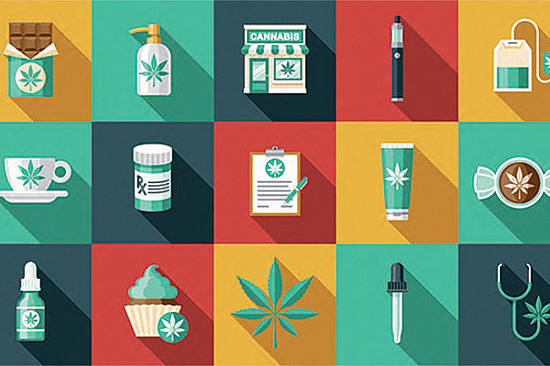Key safety tips as legal medical and recreational marijuana evolve.

It’s fair to say that society’s views on cannabis have been evolving. Today, adult recreational use is legal in 21 states and medical use is legal in most other states, to varying degrees. The use of cannabis doesn’t seem to be going away. Given that, here is what you need to know to make using cannabis safer.
Buy it legally
If you live in a state with legal cannabis — whether medical or recreational — go through the legal market rather than the illicit market, despite the temptation of lower prices. While many state programs are less than perfect, buying cannabis through the legal market generally offers some advantages and protections:
- The product is tracked throughout its entire cycle “from seed to sale.” It’s tested for potency and to ensure it is free of contaminants. Legally bought cannabis should be free of heavy metals, disallowed pesticides, fungus, and lead.
- Labeling is increasingly accurate and helpful, showing what is actually in the cannabis you are purchasing. Different types of cannabis have different effects. You need to be able to understand what you are and aren’t consuming.
- In states where its use is legal, it is still illegal to purchase marijuana from illicit sources.
- If a contaminated product is discovered, there can be a recall.
- Keeping transactions aboveboard helps to facilitate communication with health care providers and to lessen stigma that harms medical users.
Some things to watch out for in the legal market:
- Safety and monitoring are by no means foolproof. This will get better once there are consistent federal standards.
- Do not rely on well-intentioned dispensary employees (known as budtenders) to make medical suggestions when you are purchasing. Health care providers should be answering these questions — though many are still getting up to speed on the cannabis issue.
- Be extremely careful of dosages. Don’t be upsold into buying a product that is too strong for you.
- Not all products are safe to have around the house, such as THC-infused sodas, chocolates, or gummies that any child or pet would gladly overconsume.
Pay attention to potency
The most straightforward way to get into trouble with cannabis is by consuming too high a dosage of the main active ingredient, THC. As with any medicine or drug, it is safest to use the lowest effective dose for the shortest time permitted.
Cannabis flower is far more potent than it was back in the 1970s. People who haven’t used cannabis in the modern era may inadvertently overconsume, assuming it is the same weed that they had back in the day.
Taking too much cannabis, or using cannabis that is too strong for you, can cause a severe anxiety attack, possibly landing you in the emergency department. You do not want this! Too high a dosage can also potentially trigger other medical conditions, such as cardiac arrhythmias and syncope.
Some people develop cannabis hyperemesis syndrome — uncontrolled vomiting in response to cannabis use — which can only be treated by ceasing use. Start low, go slow, and stay low is good advice, especially if you’re new to (or newly back to) using cannabis. Be careful with all edibles, especially any you make yourself: licking batter off the spoon means you’re consuming the marijuana.
Concentrates (called wax, shatter, or crumble) feature extremely high levels of THC. They often don’t have other medicinal cannabinoids such as CBD, which can mitigate some of the unwanted effects of THC. It is much easier to overconsume with these concentrates, as the THC content ranges from 40% to 90%.
Who should not use cannabis?
As with all things in medicine (including medical cannabis), there are exceptions to all rules, but generally:
- Teens should absolutely avoid using cannabis due to concerns about the effects it can have on brain development.
- Women who are pregnant or breastfeeding should abstain from cannabis due to safety concerns about its effects on a newly developing brain.
- People with certain psychiatric conditions, such as any type of psychosis, or those with a family history of schizophrenia, should avoid using cannabis, as this can worsen their condition.
If you are having trouble controlling your cannabis use or if you find it is escalating, seek professional help.
What else to know
- Don’t smoke cannabis, which can inflame your lungs. Use an under-the-tongue tincture, an edible, a topical product, or a dry herb vaporizer.
- If you do smoke cannabis, don’t hold it in your lungs for more than a second or two; holding it in longer doesn’t give you more effect, it just irritates your lungs.
- Don’t drive for at least four hours after smoking cannabis, even if you feel you are able to drive safely sooner than that. After an edible, wait eight to 12 hours before driving.
- Communicate with all of your health care providers about your cannabis use. Open dialogue helps coordinate care and avoids drug interactions.
- Avoid using cannabis for 24 hours before your shift if you work in a safety-sensitive job. You should also abstain if are on call for your job or a sick relative, or if you are in charge of children.
